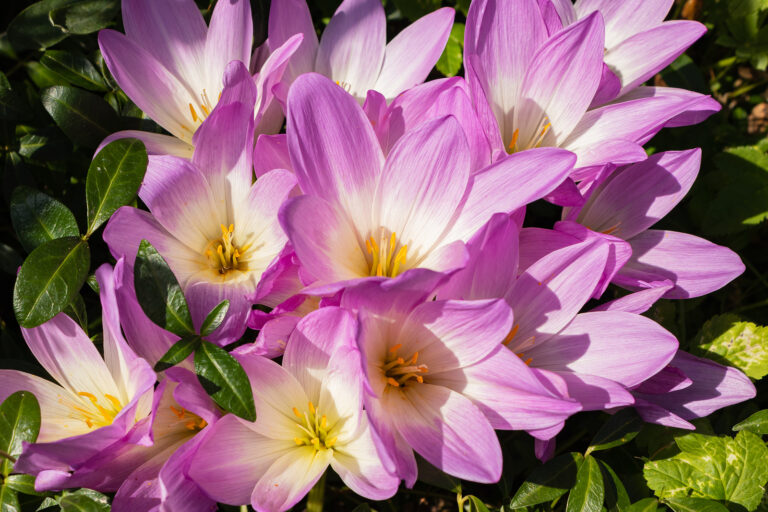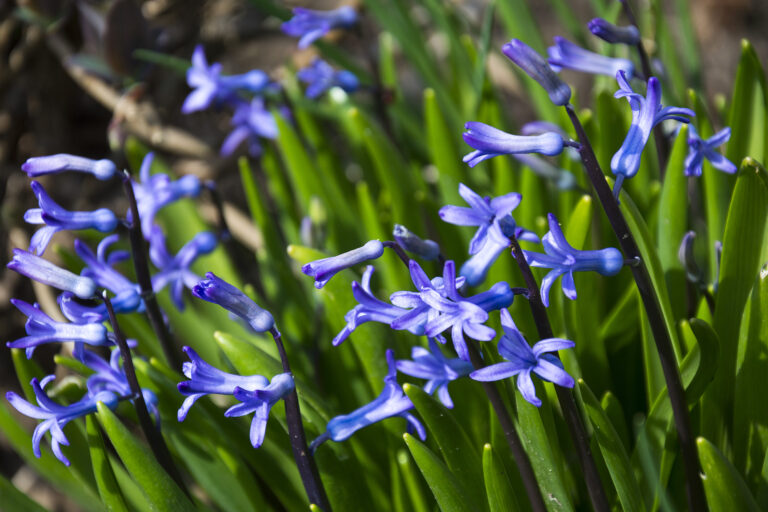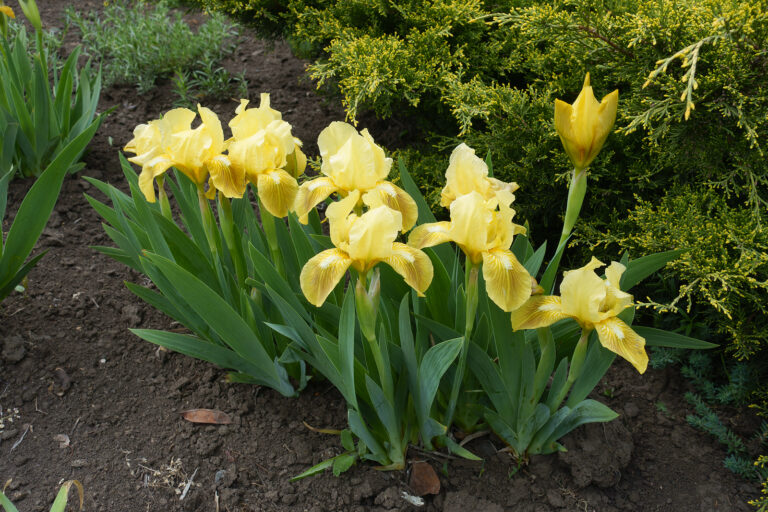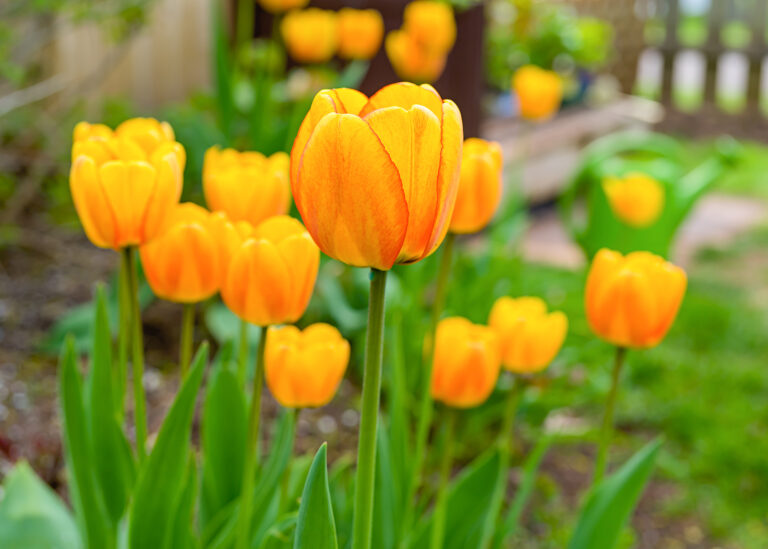How to Grow Fritillaria — Fritillary
Fritillaria–commonly called fritillary–is a bulbous perennial with pendulous bell-shaped, tubular, or saucer-shaped flowers solitary or in umbels. Leaves are lance-shaped and rise from basal bulblets and then continue in whorls with leaf-like bracts above the flowers.
Fritillaria is a large genus of about 100 species in the lily family. The genus includes larger plants well suited for beds and borders as well as small species suited for rock gardens. All species grow from bulbs.
Blooms are solitary or borne erect in unbranched clusters. Each flower consists of six petal-like tepals. Many species have a checkered pattern or a pattern of contrasting colors.
Fritillaria are best grown in full sun or light shade with humus-rich, moist but well-drained soil. Some species can be difficult to grow; they require almost perfect drainage to thrive.
Plant fritillaries at least 4 times the height of the bulb. The soil should be deeply prepared so that the bulbs sit in well-drained soil.
Get to know Fritillaria
- Plant type: Hardy spring-blooming bulb
- Growing Zones and range: 3-7
- Hardiness: Half-hardy
- Height and width: 1 to 4 feet tall, 6 inches to 2 feet wide
- Foliage: Leaves are usually lance-shaped or linear
- Flowers: Pendulous blooms solitary or in terminal umbles
- Bloom time: Spring or early summer
- Uses: Beds and borders; deer and rodent resistant
- Common name: Fritillary, crown imperial, checkered lily
- Botanical name: Fritillaria spp.
- Family: Lilaceae
- Origin: Northern Hemisphere, particularly the Mediterranean, S.W. Asia, western North America
Where to plant Fritillaria
- Plant Fritillaria in full sun or part shade.
- Grow Fritillaria in humus-rich, well-drained soil.
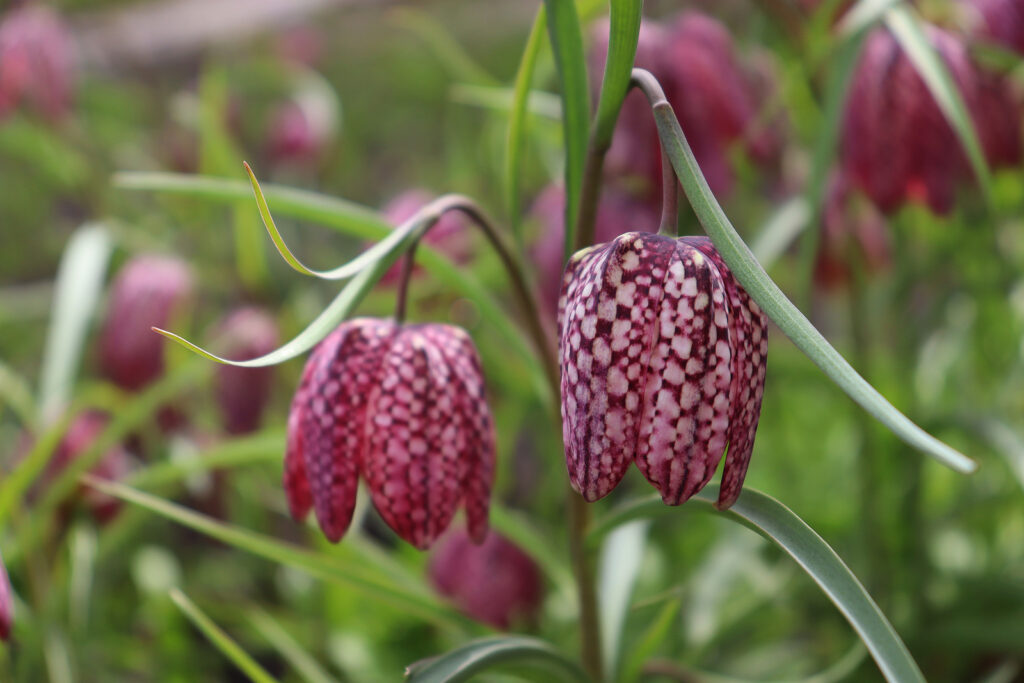
Checkered fritillary, Fritillaria meleagris
When to plant Fritillaria
- Plant bulbs as soon as available in fall usually late summer or early fall so they don’t dry out.
Planting and spacing Fritillaria
- Space Fritillaria bulbs 6 inches to 2 feet apart depending on the variety.
- Plant Fritillaria in groups of two or three.
- Crown imperial Fritillaria is spaced 8 to 12 inches deep; plant checkered lily 3 to 4 inches deep.
- Plant bulbs 4 to 6 inches deep.
- Set bulbs in the ground at a 45-degree angle to prevent tops from collecting water.
How to water and feed Fritillaria
- Fritillaria needs abundant water during the growing season. Fritillary need less water once dormant in summer.
- Fertilize Fritillaria with a bulb fertilizer in spring.
Fritillary care
- After blooming, do not cut off browning foliage; it’s needed to rejuvenate the plant.
- Remove brown foliage when the foliage pulls off without resistance.
Fritillary common problems
- Rust and leaf spot can occur.

Fritillaria propagation
- Divide offsets or collect and sow “rice-grain” bulblets in late summer.
Fritillaria varieties to grow
- Fritillaria acmopetala. Grows to 18 inches tall; bears bell-shaped pale green flowers marked with red-brown in late spring; blooms are usually solitary.
- F. affinis, rice-grain fritillary. Grows to 24 inches tall; western North America native; bears nodding, cut-shaped, greenish-white flower marked with red-purple from spring to early summer.
- F. aurea. Grows to 8 inches tall; bears solitary, bell-shaped yellow flowers checkered with orange or red-brown; cultivar ‘Golden Flag’ has bright yellow flowers.
- F. bilora, black fritillary. California native grows to 12 inches tall and bears bell-shaped brown flowers that have a black or purple tinge.
- F. camschatcensis, black lily. Grows to 18 inches tall; nodding cup to bell-shaped black-purple flowers.
- F. davisii, fritillary. Grows to 6 inches tall; bears bell-shaped green flowers in spring.
- F. glauca, Siskiyou lily. Grows to 7 inches tall; bears solitary, nodding, bell-shaped yellow flowers mottled with brown.
- F. hermonis amana. Grows to 12 inches tall; bears green flowering lightly checkered with purple or brown.
- F. imperialis, crown imperial. Grows to 4 feet tall; bears umbels of downward pointing flowers topped by a sheaf of leaflike bracts; orange, yellow-, and red-flowered forms. Cultivars include ‘Aurora’, ‘Lutea Maxima’, ‘Prolifera’, ‘Rubra’..
- F. meleagris, checkered lily. Grows to 12 inches tall; bears nodding, broadly bell-shaped pinkish purple, red-purple, or nearly black flowers.
- F. michailovskyi, fritillary. Grows to 8 inches tall; bears pendent broadly bell-shaped purple-brown flowers edged in yellow in late spring.
- F. pallidiflora, fritillary. Grows to 24 inches tall; bears clusters of bell-shaped nodding, creamy yellow flowers blushed with green and sometimes marked with red-brown.
- F. persica, fritillary. Grows 12 to 36 inches tall; bears mauve-purple flowers in spring.
- F. pontica, fritillary. Grows to 8 inches tall; bears nodding green with brown or maroon-hued flowers in spring.
- F. pudica, yellow fritillary. Grows to 6 inches tall; blooms are golden-yellow to orange-yellow.
- F. purdyi. Grows to 8 inches tall; bears nodding bell-shaped whitish-to-beige flowers veined and mottled with red- or purple-brown.
- F. thunbergii. Grows to 30 inches tall; bears loose clusters of bell to cup-shaped flowers that are creamy white and checkered with pale yellow.
- F. uva-vulpis, fritillary. Grows to 8 inches tall; bears solitary, nodding, bell-shaped flowers that are purple-brown with yellow edges.
- F. verticillata. Grows to 36 inches tall; bears nodding, bell-shaped, white or yellow flowers flecked with green or purple.



